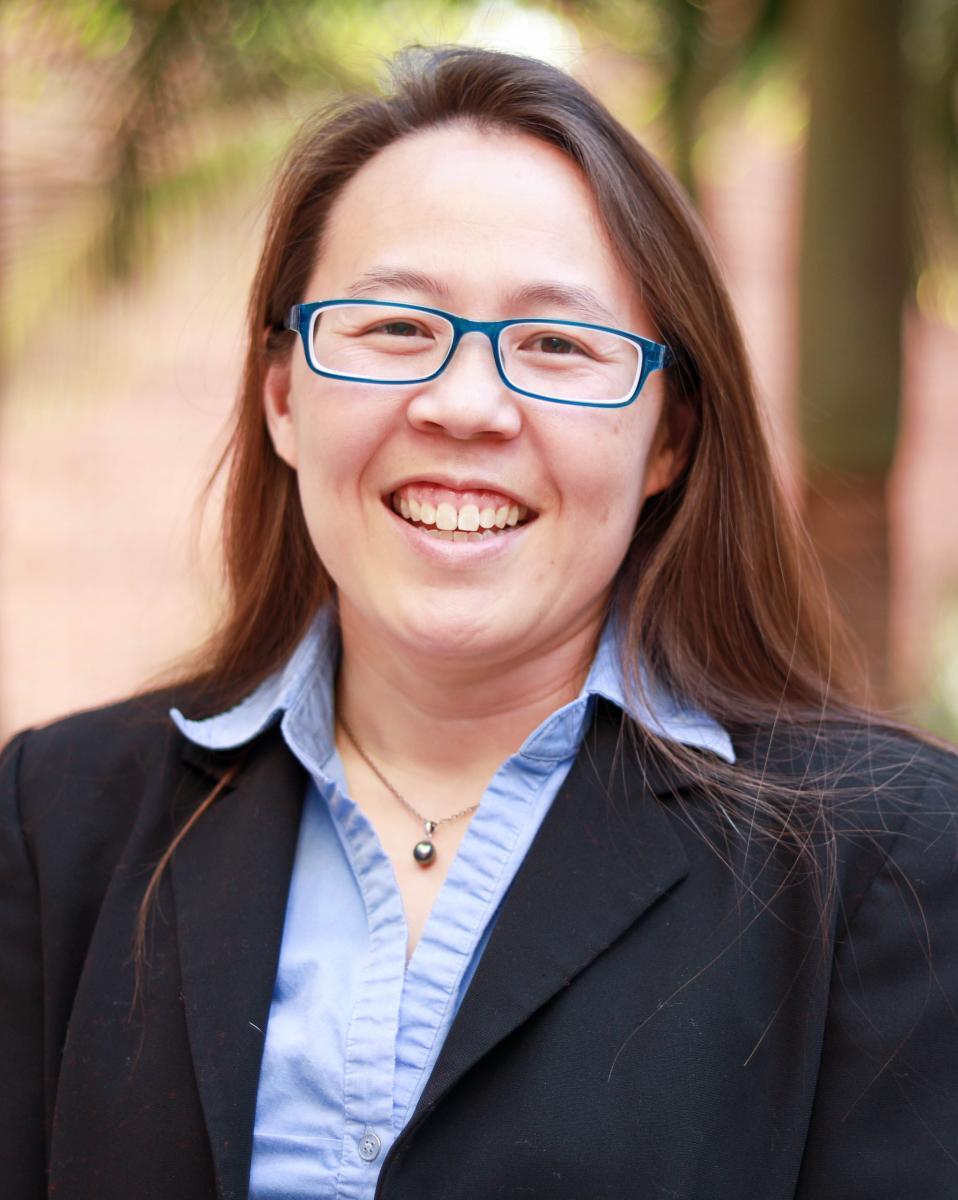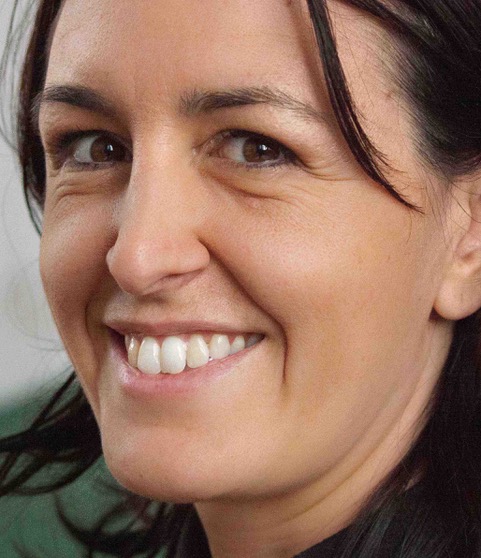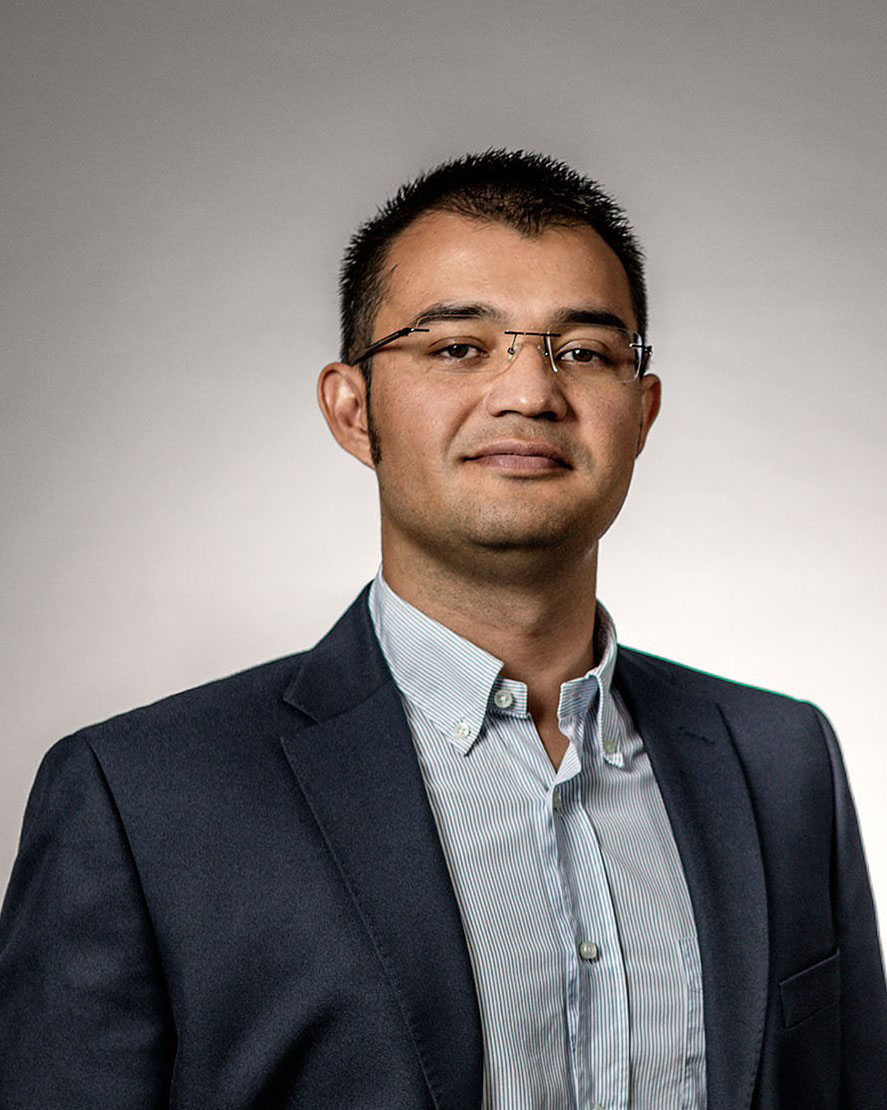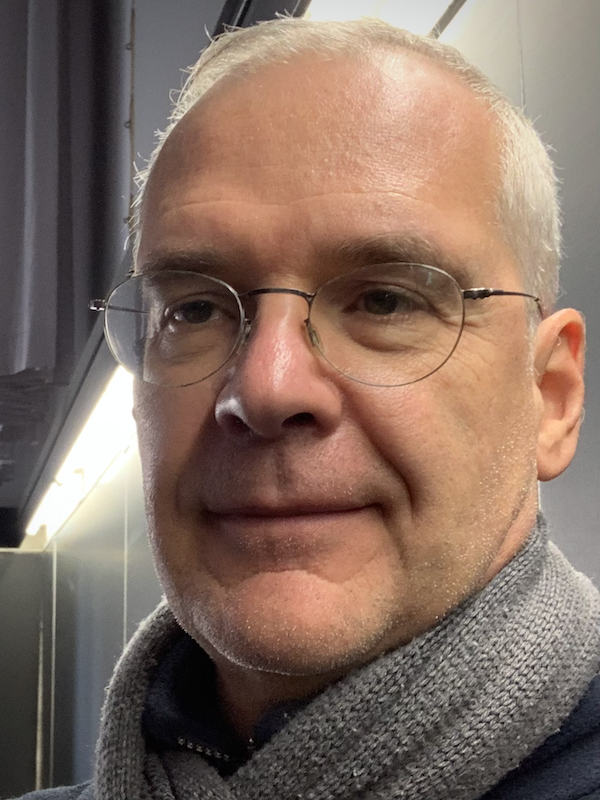2022 Edition
7th-8th July 2022
Location
- Aula A28, School of Engineering - Largo Lucio Lazzarino 1 56122 Pisa, Italy
- Zoom links – provided below
PROGRAMME
July 7
9.00 -9.15 -Welcome
- Antonio Bicchi and Matteo Bianchi, Università di Pisa, Pisa, Italy
9.15-9.45 - "Get in touch: Tactile perception for human-robot systems"
- Veronica Santos, University of California, Los Angeles (UCLA), USA
9.45-10-15 - Navigation technologies for visually impaired people
- Federica Pascucci, University of Roma Tre, Rome, Italy
10.15-10.45 - Coffee Break
10.45-11-15 - The evaluation of tactile dysfunction in the hand in type 1 diabetes: a novel method based on haptics
- Alessandro Moscatelli, University of Rome “Tor Vergata” and Santa Lucia Foundation IRCSS, Rome, Italy
11.15-11.45 - Benchmarking: bridging the gap between lab and out-of-the-lab
- Diego Torricelli, Cajal Institute (Spanish National Research Council), Spain
July 8
14.00 -14.30 - Neuromuscusculoskeltal prosthesis and rehabilitaton of pain
- Max Ortiz Catalán, Center for Bionics and Pain Research and Chalmers University of Technology, Sweden
14.30-15.00 - Preliminary Thoughts about Simple Control to Leverage Helpful Compliance in Soft Manipulation
- Oliver Brock, Technische Universität Berlin, Germany
15.00-15.30- Configuration and Control of Bionic Legs
- Levi J. Hargrove, Shirley Ryan AbilityLab and Northwestern University, Chicago, USA
15.30-16.00 - Zero-dynamics and stable inversion problems in locomotion
- Leonardo Lanari, Sapienza University of Rome, Rome, Italy
16.00-16.30 - Model predictive control and impedance regulation for dynamic behaviors
- Ludovic Righetti, New York University - USA and Max-Planck Institute for Intelligent Systems, Germany
16.30-17.00- Coffee Break
17.00-17.30 – An Overview of Computer Aided Methods & Tools for Designing Compliant Mechanisms
- Giovanni Berselli, Università di Genova, Genoa, Italy
17.30-18.00 – ReachBot: locomotion by manipulation
- Mark R. Cutkosky, Stanford University, USA
18.00-18.15 – Closing Remarks
- Antonio Bicchi and Matteo Bianchi, Università di Pisa, Pisa, Italy
2022 Speakers
 VERONICA SANTOS
VERONICA SANTOS
TITLE: "Get in touch: Tactile perception for human-robot systems"
ABSTRACT: Compared to vision, the complementary sense of touch has yet to be broadly integrated into robotic systems that physically interact with the world. An artificial sense of touch is especially useful when vision is limited or unavailable. In this presentation, I will highlight our work on task-driven efforts to endow robots with tactile perception capabilities for human-robot interaction, remote work in harsh environments, and the manipulation of deformable objects. Real-time tactile perception and decision-making capabilities could be used to advance semi-autonomous robot systems and reduce the cognitive burden on human teleoperators. With advances in haptic display technologies, interfaces with the human body, and networking capabilities, however, touch can be used for more than completing novel tasks. Touch can enhance social connections from afar, enable the inclusion of marginalized groups in community activities, and create new opportunities for remote work involving social and physical interactions.
BIO: Veronica Santos is a Professor of Mechanical and Aerospace Engineering and Director of the UCLA Biomechatronics Lab (http://biomechatronics.ucla.edu). She currently serves as the Associate Dean of Equity, Diversity, and Inclusion and Faculty Affairs for the Samueli School of Engineering. Dr. Santos earned her B.S. in mechanical engineering (music minor) from UC Berkeley, was a Quality and R&D Engineer at Guidant Corporation, and earned her M.S. and Ph.D. in mechanical engineering (biometry minor) from Cornell University. As a postdoc at the University of Southern California, she contributed to the development of a bio-inspired tactile sensor for prosthetic hands before moving to Arizona State University as an Assistant Professor. Her research interests include hand biomechanics, human-machine systems, tactile sensing and perception, and prosthetics/robotics for grasp and manipulation. Dr. Santos was selected for an NSF CAREER Award, a U.S. National Academy of Engineering Frontiers of Engineering Education Symposium, and numerous teaching awards. She has co-edited a book entitled, “The Human Hand as an Inspiration for Robot Hand Development” and her work has appeared in TechCrunch and Forbes, among others. Dr. Santos has served as an ICRA Editor, ASME Journal of Mechanisms and Robotics AE, ACM Transactions on Human-Robot Interaction AE, and the 2020 IEEE Haptics Symposium Editor-in-Chief. She was a General Co-Chair for the 2022 IEEE Haptics Symposium, a role she will continue for 2024.
 LUDOVIC RIGHETTI
LUDOVIC RIGHETTI
TITLE: Model predictive control and impedance regulation for dynamic behaviors
ABSTRACT: There is a breadth of remaining challenges associated to robotic locomotion and manipulation. How to efficiently adapt in real-time the movements of a robot? How to efficiently find sequences of contacts to enable dynamic manipulation of objects or non-gaited locomotion? How tocompute impedance schedules ensuring robust and safe interactions? This talk will discuss recent research results attempting to solve (partially) these problems. It will examine the effects of various sources of uncertainty on optimal policies and how the impedance of articulated robots can be adapted automatically. It will present results for the efficient computation of multi-contact behaviors, including non-trivial contact sequences using numerical optimization methods, Monte-Carlo tree search, and learned value functions.
BIO: Ludovic Righetti is an Associate Professor in the Electrical and Computer Engineering Department and in the Mechanical and Aerospace Engineering Department at the Tandon School of Engineering of New York University and a visiting researcher at the Max-Planck Institute for Intelligent Systems in Germany. He holds an Engineering Diploma in Computer Science and a Doctorate in Science from the Ecole Polytechnique Fédérale de Lausanne. He was previously a postdoctoral fellow at the University of Southern California and a group leader at the Max-Planck Institute for Intelligent Systems. His research focuses on the planning, control and learning of movements for autonomous robots, with a special emphasis on legged locomotion and manipulation. He is more broadly interested in questions at the intersection of decision making, automatic control, optimization, applied dynamical systems and machine learning and their applications to physical systems.
 FEDERICA PASCUCCI
FEDERICA PASCUCCI
TITLE: Navigation technologies for visually impaired people
ABSTRACT: The possibility of exploiting Information and communication technologies for supporting visually impaired people and promoting vision substitution has been widely considered over the last five decades, especially with the emergence of electronic Braille displays, synthetic speech and ultrasonic sensors. Most of these solutions focus on a specific vision problem, being in general very complicated the design of a general-purpose solution for vision substitution. For example, some devices have been designed for helping in the perception of spatial layouts, monitoring of the near environment to facilitate mobility, or providing general knowledge about a large scale environment to improve orientation. At the same time, wireless technologies such as GPS, WiFi, iBeacons, etc. have significantly contributed to the proliferation of localization systems, due to their pervasiveness, with the ambition of improving the independence and social inclusion of blind and low vision people. In this talk, different technologies adopted to help visually impaired people during navigation in outdoor and indoor environmenst are presented and discussed.
BIO: Federica Pascucci received the M.S. degree in computer science and automation engineering from the University of Roma Tre, Rome, Italy, in 2000 and the Ph.D. degree in system engineering from the University of Rome La Sapienza, Rome, in 2004. Since 2020, she has been an Associate Professor with the Department of Engineering, University of Roma Tre. Her current research interests include indoor/outdoor localization, cyber-physical systems, industrial control systems, inclusive technologies and critical infrastructure protection. She has published over 100 journal and conference papers. Since 2021, she serves as chair for the Technical Activities for the Institute of Robotics and Intelligent Machines (I-RIM).
 ORTIZ CATALAN
ORTIZ CATALAN
TITLE: Neuromuscusculoskeltal prosthesis and rehabilitaton of pain:
ABSTRACT: Prof. Ortiz Catalan will present clinically viable technologies to restore quality of life to patients with sensorimotor impairment. He led the development of the first prosthetic arm integrated directly into a patient’s bone, nerves, and muscles. The first patient implanted with this novel neuromusculoskeletal interface has used it without interruption for over 9 years in everyday life. Patients implanted with this new generation of prostheses are also provided with intuitive sensory feedback via direct nerve stimulation. Direct skeletal attachment via osseointegration, along with control and sensory feedback via implanted neuromuscular electrodes, can now be provided in a self-contained prosthesis for use in daily life. Originally developed for above-elbow amputations, this technology is now being implemented for below-elbow and lower limb amputations. Prof. Ortiz Catalan will also present a novel hypothesis on the origin and treatment of Phantom Limb Pain, and how motor decoding technology can be used to treat it.
BIO: Prof. Max Ortiz Catalán, Ph.D., is the Founder and Director of the Center for Bionics and Pain Research (@CBPR.se) and the Professor of Bionics at Chalmers University of Technology, Sweden, where he also heads the Bionics Research Unit at the Department of Electrical Engineering. He has received several honors for his work, notably the “Swedish Embedded Award” by the Swedish Electronic Association in 2018, the “Brian & Joyce Blatchford Award” by ISPO in 2017, the “Delsys Prize” by Delsys in 2016, and the “European Youth Award” by the European Council in 2014. His research includes bioelectric signals acquisition electronics (analog and digital); bioelectric signal processing and machine learning algorithms for decoding motor volition and control; neuromuscular interfaces; neurostimulation for sensory feedback; bone-anchored prostheses and osseointegration; and virtual and augmented reality for neuromuscular rehabilitation and the treatment of phantom limb pain.
Webpage: http://www.chalmers.se/en/staff/Pages/max-jair-ortiz-catalan.aspx Twitter: @MaxOrtizCatalan Podcast: https://redcircle.com/shows/conversations-on-bionics-and-pain
ALESSANDRO MOSCATELLI
TITLE: The evaluation of tactile dysfunction in the hand in type 1 diabetes: a novel method based on haptics
ABSTRACT: We present an innovative method based on haptics for the evaluation of the sense of touch in the hand, in people affected by type 1 diabetes. Forty individuals affected by diabetes and 20 healthy controls took part in the study; the diabetes group was further divided into two subgroups based on vibration sensitivity in the lower limb. By means of a novel haptic device, tactile sensitivity in the fingertip was measured as the ability of the participants to discriminate slip motion speed. Tactile sensitivity was significantly lower in individuals affected by diabetes as compared to controls. Depending on the subgroup, the difference from the controls was equal to 0.11 (95% CI from 0.029 to 0.186) and to 0.267 (95% CI from 0.198 to 0.336). Within the diabetes group, tactile sensitivity correlated with vibration sensitivity in the upper (p = 0.001) and lower limb (p = 0.003). A significant relationship between nerve conduction parameters and tactile sensitivity was found (p = 0.03). Finally, we combined the different predictors (clinical, vibratory and electroneurography data) by using cluster analysis; tactile sensitivity was found to be significantly different between different clusters (p = 0.004). Early signs of tactile dysfunction in the hand were found in individuals affected by diabetes, even in absence of diabetic neuropathy. The protocol presented in this study is a promising tool for the assessment of tactile dysfunction in the hand in people affected by type 1 diabetes.
BIO: M.D., Ph.D. Alessandro Moscatelli is tenure track researcher (RTDb) at Department of Systems Medicine, University of Rome “Tor Vergata” and junior group leader at Department of Neuromotor Physiology, Santa Lucia Foundation IRCCS, Rome, Italy. He is a board member of the EuroHaptics Society (2018–present). His current research interests include haptic, the integration of proprioception and touch, tactile and visual perception of motion, and motor control of the hand.
 LEONARDO LANARI
LEONARDO LANARI
TITLE: Zero-dynamics and stable inversion problems in locomotion
ABSTRACT: The idea behind this short talk is to highlight the connections between the zero-dynamics and some locomotion problems. At first, the role of zero-dynamics in an output tracking problem and in system inversion is recalled. For the considered locomotion problems, system inversion cannot be achieved as such since the zero-dynamics turns out to be unstable. Proper techniques for system inversion should then be used, which all share an anticipative behavior as a common idea. This solution will then be embedded in a Model Predictive Control framework relaxing the output tracking problem and including state and/or input constraints. Throughout the talk, a gait generation problem for humanoids will be primarily used as an illustration example. Further considerations will deal with feasibility, stability, and robustness.
BIO:Leonardo Lanari received his Ph.D. degree in Control Engineering in 1992 from Sapienza University of Rome, Italy. He is currently with the Department of Computer, Control and Management Engineering (DIAG) of the same university as an Associate Professor in automatic control. His research interests are in the general area of control of robotic systems, with an emphasis on humanoid control and robots with elastic joints and links.
 LEVI J. HARGROVE
LEVI J. HARGROVE
TITLE: Configuration and Control of Bionic Legs
ABSTRACT: Powered assistive robots enable disabled individuals to complete a variety of different ambulation activities. However, proper control of these devices requires that they identify and respond to user intent. Here we present one such device, an open-source powered lower limb prosthesis, which was configured to acquire and respond to the user’s neural information (acquired via electromyography) fused with other sensors available on the device. The control system was used across a range of ambulation activities and included seamless transitions between activities. More recently, we have used deep neural networks to investigate how control approaches can be used to create control systems that generalize across different users and devices to reduce the amount of calibration data required from each user.
BIO: Levi J. Hargrove, PhD, P.Eng, received his MScE and PhD in Electrical Engineering from the University of New Brunswick (2005, 2008). He is currently the Director and Scientific Chair of Center for Bionic Medicine at the Shirley Ryan AbilityLab and an Associate Professor in the Departments of Physical Medicine & Rehabilitation and the McCormick School of Engineering at Northwestern University. His research interests include signal processing, pattern recognition, and control of bionic limbs. A major goal of his research is to develop clinically realizable myoelectric control systems that can be made available to persons with limb loss in the near future. In 2012, Dr. Hargrove co-founded Coapt, a company to commercialize control algorithms for prosthetics and orthotics. His research addresses all levels of amputation and has been published in the Journal of the American Medical Association and the New England Journal of Medicine and has resulted in multiple patents. Key projects include the development of advanced and adaptive control systems for prosthetic legs, improving control of robotic hand prostheses, and intramuscular EMG signal processing.
MARK R. CUTKSOSKY
TITLE: ReachBot: locomotion by manipulation
ABSTRACT: ReachBot is a joint project between Stanford and NASA to explore a new approach to mobility in challenging environments such as Martian caves. It consists of a compact robot body with very long extending arms, based on booms used for extendable antennas. The booms unroll from a coil and can extend many meters in low gravity. In rocky environments the booms are equipped with low-mass grippers that use spines for a secure grasp. The booms are strong in tension but vulnerable to buckling in compression or bending. Motion planning with ReachBot therefore has similarities to multifingered grasp planing -- instead of fingers that can push but not pull, we have booms that, to a first approximation, can pull but not push. Given its very long reach, ReachBot has a large dexterous workspace that simplifies motion planning. However, the sequence of poses must also consider what happens if any grasp fails.
BIO: Mark R. Cutkosky is the Fletcher Jones Professor in the Dept. of Mechanical Engineering at Stanford University and director of the Biomimetics and Dexterous Manipulation Laboratory. He joined Stanford in 1985, after working in the Robotics Institute at Carnegie Mellon University and as a design engineer at ALCOA, in Pittsburgh, PA. He received his Ph.D. in Mechanical Engineering from Carnegie Mellon University in 1985. Cutkosky's research activities include robotic manipulation and tactile sensing and the design and fabrication of biologically inspired robots. He has graduated over 60 Ph.D. students and has hundreds of publications in these areas. His former PhD students hold faculty positions at MIT, Harvard, Stanford, U.C. Berkeley, The University of Michigan, Purdue, Seoul National, Shanghai Jiao Tong and other leading universities as well as government laboratories and industry.
He consults with companies on robotics and human/computer interaction devices and holds over a dozen patents on related technologies. His work has been featured in Discover Magazine, The New York Times, National Geographic, Time Magazine and other publications and has appeared on PBS NOVA, CBS Evening News, and other popular media.
Cutkosky’s awards include a Fulbright Faculty Chair (Italy 2002), Fletcher Jones and Charles M. Pigott Chairs at Stanford University, an NSF Presidential Young Investigator award, and Times Magazine Best Innovations (2006) for the Stickybot gecko-inspired robot. He is a Fellow of ASME and IEEE and a member of Sigma Xi.
Cutkosky’s laboratory and research can be found at http://bdml.stanford.edu
His current faculty profile can be found at: https://profiles.stanford.edu/mark-cutkosky
 OLIVER BROCK
OLIVER BROCK
TITLE: Preliminary Thoughts about Simple Control to Leverage Helpful Compliance in Soft Manipulation
ABSTRACT: Successful manipulation requires taming the uncertainties and complexities that arises from complex multi-contact situations involving sliding and surface patches. Accurately modeling such situations is difficult (really: it’s a nightmare). The successes achieved with soft hands have demonstrated that the morphology of the hand itself can relieve us of some of the burden of producing accurate models. But how exactly can we best take advantage of this? How can we take advantage of both morphology and feedback-driven control to produce robust, general, and competent manipulation? In this presentation, I will first analyze the advantages produced by leveraging softness in hands and then being to discuss how we might go about finding control methods that augment the morphology’s abilities rather than interfering with them.
BIO: Oliver Brock is the Alexander-von-Humboldt Professor of Robotics in the School of Electrical Engineering and Computer Science at the Technische Universität Berlin, a German "University of Excellence". He received his Ph.D. from Stanford University in 2000 and held postdoctoral positions at Rice University and Stanford University. He was an Assistant and Associate Professor in the Department of Computer Science at the University of Massachusetts Amherst before moving back to Berlin in 2009. The research of Brock's lab, the Robotics and Biology Laboratory, focuses on robot intelligence, mobile manipulation, interactive perception, grasping, manipulation, soft material robotics, interactive machine learning, deep learning, motion generation, and the application of algorithms and concepts from robotics to computational problems in structural molecular biology. Oliver Brock directs the Research Center of Excellence "Science of Intelligence". He is an IEEE Fellow and was president of the Robotics: Science and Systems Foundation from 2012 until 2019.
GIOVANNI BERSELLI
TITLE: An Overview of Computer Aided Methods & Tools for Designing Compliant Mechanisms
ABSTRACT: Compliant Mechanisms (CMs) and Mechatronic Systems formed therewith are currently employed in several engineering applications requiring high precision and reduced number of parts. For a given mechanism topology, CM analysis and synthesis may be developed resorting to several methods, here including the well-known Pseudo-Rigid Body (PRB) approximation, where flexible members undergoing large deformations are modelled via a series of spring-loaded revolute joints. The PRB approach is not only intended as a design tool for the first attempt sizing of the mechanism, but it is also useful for reducing computational costs during simulation and control of engineering systems containing compliant members. In particular, from a CM analysis standpoint, the applicability of a generic PRB model requires the determination of the kinematic pairs’ location and the stiffness of a set of generalized springs. In parallel, from a design standpoint, a PRB model representing the kinetostatic behavior of a flexible system should allow to determine the flexures’ characteristics providing the desired compliance. In light of these considerations, the objective of the present talk is to critically discuss, on the basis of our experience, engineering methods and related Computer-Aided Engineering (CAE) tools allowing for the (automatic) computation of accurate CM models and for the shape optimization of complex-shaped flexures comprising out-of-plane displacements and distributed compliance. After a brief overview of current and past projects, few case studies are critically discussed, highlighting how the suggested techniques, which combines reliable numerical results to the visual insight of CAE tools, may be particularly useful for analysing/designing spatial CMs composed of non-trivial flexure topologies. Specific attention will be devoted to CMs application on robot hands/grippers and variable stiffness actuation systems.
BIO: Giovanni Berselli is Full Professor and Chair of Design Methods for Industrial Engineering at the University of Genova, Italy, where he coordinates the PhD Degree in Mechanical, Energy and Management Engineering. He is also Affiliated Researcher with the Advanced Robotics Department at the Italian Institute of Technology (IIT). Prof. Berselli is currently the Chair of the American Society of Mechanical Engineers (ASME) – Italy Section and the past Chair of the ASME Technical Committee on Modeling, Dynamics, and Control of Adaptive Systems. He has been Visiting & Affiliated Scientist of the Medical Device and Simulation Lab. at Massachusetts General Hospital & Harvard Medical School, Visiting Scientist at the German Aerospace Agency (DLR), Visiting Professor at the University of Twente, and Research Associate at Monash University, Australia, and with the School of Advanced Studies of the University of Navarra, Spain. Within his Department, Prof. Berselli coordinates the Erasmus Program and he is Delegate for International Relations. He has authored more than 200 publications in peer-reviewed international journals or conference proceedings, and edited two international books. Recipient of several IFToMM, ASME and IEEE Best Paper Awards and finalist for an ERC starting grant. He is currently Associate Editor for IEEE/ASME Transactions on Mechatronics, International Journal of Interactive Design & Manufacturing, and Mechanical Science. Prof. Berselli's scientific activity is focused on the design, modelling and experimental evaluation of: i) robot hands and grippers; ii) compliant mechanisms and soft actuators for safe human-robot interaction; iii) energy-aware industrial robotics.

